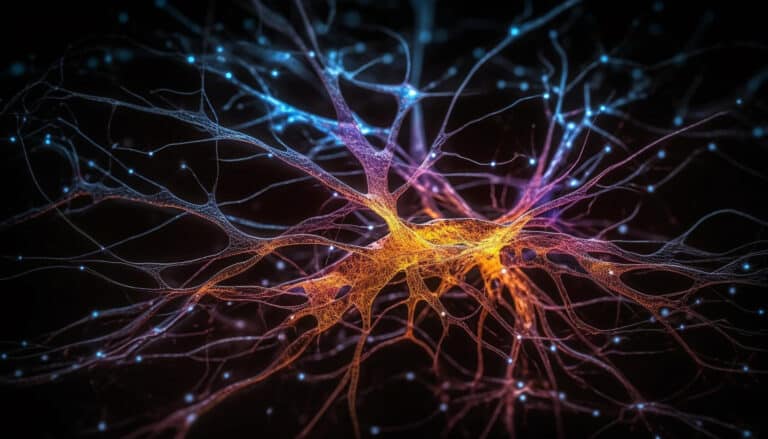Drugs addiction is a growing problem in today’s society. Yet, regardless of being a serious condition and affecting people from all walks of life, drug addiction is still mistakenly understood. There are people who think that people who have fallen into drug addiction are those individuals with no good morals and they still chose to do drugs even with the devastating and harmful consequences on themselves and their families.
The misconceptions surrounding drug addiction contribute to the stigmatization and lack of support for those struggling with this disease. It is crucial to recognize that addiction is a complex issue that goes beyond individual choices or moral values. Addiction is often rooted in underlying psychological or physiological factors, making it a matter of health rather than mere willpower. By understanding the complexities of addiction and providing compassionate support, we can work towards effective solutions and help individuals on their journey towards recovery.
While some may argue that kicking a drug habit is as simple as having a strong will, others know the truth: addiction is a tough battle that requires more than just motivation to win. These negative connotations greatly contribute to the stigma until this time. Unfortunately, this only adds to the shame, hesitance, and isolation, making it even harder to seek help and be motivated to recover.
Most of the assumptions regarding drug addiction do not accurately reflect the reality of the condition, the underlying reasons for it, and the treatment. In fact, quitting drugs, especially in long-term use, takes more than just strong will to stop. Since drugs can cause neurological changes, it becomes more of a challenge to quit without the help from a professional drug addiction center and professionals. While it is true that using drugs is a decision, stopping is a different matter because drugs have already messed with the body and brain function.
In all, understanding the causes, symptoms, and treatment of drug addiction is crucial in combating this epidemic. It is important to recognize the signs of addiction and seek help for yourself or a loved one if necessary. In this article, we will explore the various factors that contribute to drug addiction, the symptoms of addiction, and the different effective treatment options available. Before everything else, let’s be clear about what is drug addiction.
Definition of Drugs Addiction

Drug addiction is a debilitating condition in which someone has an uncontrollable urge to use drugs despite the negative consequences. It’s an illness characterized by compulsive drug-seeking and use, even when it leads to physical and/or psychological harm. Drug addiction changes the pathways of the brain, making it difficult for people to control their choices and behaviors. The disease can be fatal without treatment, as abuse of certain substances can lead to organ failure or overdose.
Drug addiction is classified as a chronic brain disorder that requires evidence-based treatment programs to address the effects of drugs on the mind and body. Such treatments should be tailored to each individual’s needs and may include cognitive behavioral therapy, medications, lifestyle strategies such as exercise, mindfulness techniques or group support meetings. Because relapse is common with this type of disease, ongoing care is often necessary throughout recovery. Addiction is a complex phenomenon with multiple causes that vary from person to person, so different forms of assistance and treatment programs are needed in order for individuals to make meaningful progress on their recovery journey.
Why Do People Get Addicted to Drugs?
It is difficult to predict why one person may become addicted to drugs while others do not. Research suggests that there could be a wide range of factors involved in drug addiction, such as biology, environment and psychology. These elements interact together in a complex way to increase an individual’s risk of developing an addiction. Factors like genetics can play a role and account for about half of the person’s risk for addiction. Additionally, environmental factors and growing up in poverty have also been linked to higher rates of drug use which could further put someone at risk.
Moreover, psychological traits such as low self-esteem, impulsiveness or mental illness can contribute to risks associated with substance use disorder. An individual’s life experiences are also important when it comes to drug addiction; traumatic events that have happened earlier in life or chronic stress can play a role in the development of an addiction. While there may not be one single cause that causes people to become addicted, having more of certain risk factors increases the likelihood that taking drugs will eventually lead to drug dependence or substance use disorder.
Why Some Individuals Are More Prone to Addiction Than Others?
Drug addiction can affect people in different ways. The body and brain of every individual are unique, which means that everyone reacts to drugs differently. Some people love the rewarding effects and good feelings they get the first time they try something, so they may be more likely to use it again, or even become dependent on it. Unfortunately, this group is most vulnerable to developing a full-blown addiction. On the other hand, some individuals might hate their first experience with drugs and never want to use them again; these people are far less likely to become addicted.
Though anyone can potentially become addicted to drugs, some factors do make a person more susceptible than others. People who have pre-existing mental health issues, suffer from physical trauma or chronic pain, come from an unstable home environment or have access to substances that can lead to misuse are at greater risk for becoming addicted as well. Other factors that contribute include age, gender, family history, and social/economic status. Sadly, no one is truly safe from this very real danger – but being aware of the risks is key in preventing an addiction from forming in the first place.
Drug Addiction and the Brain

Drug addiction impacts the brain on many levels. When a person begins to use drugs, the chemical compounds enter their brain and bloodstream. The reward centers in the brain are intensely stimulated by these substances, causing users to experience euphoric feelings and strange behavioral changes. This stimulates the brain’s reward system, which in turn makes people crave more of the substance and lose control of their impulses.
As their addiction gets worse, their dependence increases as they develop a physical need for the drug. This is due to how certain chemicals interact with certain receptors in the brain that control emotions, decision making and other processes. Over time these substances create an imbalanced set of pathways that lead an individual back to substance abuse despite knowing its dangerous side effects. The psychological consequences of addiction can be long-lasting, with some individuals suffering depression or anxiety after discontinuing use of drugs or alcohol.
Ultimately, this type of addiction has profound effects on how one’s brain functions. Over time, neurochemical pathways start to change as drug abuse alters one’s cognition, emotions and even behavior patterns which can lead to risky behaviors such as reckless driving or violent outbursts- further enhancing the cravings for more drugs or alcohol. Additionally poor decision making skills coupled with unusual mental states can be attributed to chronic drug and illegal substance use. In conclusion Drug addiction takes a toll on both physical and psychological health, affecting an individual’s long-term functioning if not treated in time.
The Biochemistry of Addiction
The biochemistry of addiction is a complex process that starts with drug use and progresses to establish maladaptive patterns in the human brain. Drugs like cocaine, for example, are psychoactive and can cause intense euphoria in the user. This feeling arises from an abnormal release of dopamine, a neurotransmitter responsible for producing pleasurable sensations. As someone begins using drugs more frequently, these stimulants increase the amount of dopamine released from neurons throughout the brain and body. The result is exaggerated pleasure-seeking behavior and psychological dependence on the drug.
Furthermore, once a person has become addicted to a substance, their body begins to crave it even in periods of abstention. This will trigger withdrawal symptoms. The reason is that repeated drug exposure alters neuron functioning across multiple brain areas involved in goal-directed behaviors, impulse control, memory formation, and emotions. Long-term addiction can involve structural changes within neural pathways that significantly modify how individuals experience their environment and how they respond to cues associated with drug use. These effects make it extremely difficult for someone heavily addicted to a particular substance to terminate its use.
Overall, with the complexity and effects of drug addiction, proper treatment is necessary for people struggling with the condition so they may be able to recover, start fresh, and enjoy the things that they deserve.
Addiction vs. Misuse and Tolerance
Addiction, misuse, and tolerance are three important concepts that are closely related in the context of drug abuse. Addiction can be defined as the chronic use of drugs. It often results in compulsive drug-seeking behavior, despite the possible harmful consequences. In contrast, drug misuse occurs when a person uses drugs in a manner that is different from their prescribed purpose or in a way that is not intended. This can lead to several negative outcomes, including physical dependence, social problems, and psychological issues.
Moreover, tolerance is another concept that is associated with the long-term use of drugs and substance abuse. Tolerance happens when a person needs to use more substances to achieve the same effects as they did initially. This often happens when the brain becomes accustomed to the presence of the drug and requires more of it to produce the same reaction. Tolerance can be a significant issue for individuals using drugs regularly, leading to dependence, withdrawal symptoms, and an increased risk of overdose.
While addiction, misuse, and tolerance may seem like distinct concepts, they are often interconnected. Individuals who misuse drugs may be at an increased risk of developing addiction as their body becomes accustomed to the drug’s effects. Similarly, individuals who develop a tolerance to a drug may become more likely to misuse it as they attempt to achieve the same high and euphoric feelings as felt before. Understanding the complex nature of addiction, misuse, and tolerance is vital in developing effective treatment strategies for individuals struggling with substance abuse.
Now that we have established the relationship between addiction, misuse and tolerance, let’s discuss some of the common types of drugs and how they can contribute to the development of substance abuse issues.
Common Types of Drugs

Drug misuse and addiction are major issues that have various consequences that affect individuals differently. There are various types of drugs, each with its own set of effects and risks, that can contribute to an individual experiencing substance abuse. To effectively prevent and treat drug addiction, it is crucial to understand the unique risks and effects of these different drug types.
Benzodiazepines
Benzodiazepines are prescription drugs commonly used to treat anxiety disorders, panic attacks, and insomnia. They work by enhancing the effects of a neurotransmitter in the brain, which helps to produce feelings of relaxation and calm. However, they can also be highly addictive and lead to dependence, especially when used for extended periods.
Some of the effects of benzodiazepines include drowsiness, dizziness, and impaired coordination. They may also cause confusion, memory impairment, and decreased reaction time, significantly impairing an individual’s ability to perform regular tasks and operate machinery. Additionally, withdrawal symptoms of benzodiazepines can develop when the drug is abruptly stopped or reduced, which can include anxiety, insomnia, irritability, and seizures.
Because of their high potential for misuse, benzodiazepines are classified as Schedule IV controlled substances in the United States, and their use is highly regulated. Medical practitioners should exercise caution when prescribing benzodiazepines. In fact, people should only use them under medical supervision. For people struggling with addiction to benzodiazepines, treatment combining behavioral therapies, support groups, and medication-assisted treatment under the supervision of a medical professional is typically the most effective approach.
Xanax
Xanax is among the most commonly prescribed benzodiazepines and is highly addictive. It is often used to treat anxiety and panic disorders, but its calming effects can be appealing to individuals who do not have these conditions. Xanax works by suppressing the central nervous system, which can lead to effects such as drowsiness, confusion, impaired coordination, and memory problems.
Over time, individuals may develop a tolerance to Xanax, needing higher doses to achieve the same effect, which can lead to physical and psychological dependence. Withdrawal symptoms of Xanax abrupt discontinuation or reduced dosage can be extremely uncomfortable. These symptoms often include anxiety, irritability, seizures, and even death in extreme cases. Because of these risks, it is essential to take Xanax only under medical supervision and use it strictly according to the prescribing physician’s advice.
Valium
Valium is a commonly prescribed benzodiazepine often used to alleviate anxiety, muscle spasms, and seizures. What triggers the physical and psychological dependence on it is its calming effects. Since its calming effects are addictive, many can’t help but use it more. Over time, valium can cause a number of side effects, such as memory problems, drowsiness, dizziness, blurred vision, and impaired coordination.
Besides prolonged use, another problem with valium is that it can cause unpleasant withdrawal symptoms like agitation, excessive sweating, tremors, and sleep disturbances. Hence, it is strictly recommended that individuals only take this medication according to the prescription. Proper monitoring is necessary to avoid addiction, and it can effectively treat different conditions.
Ativan
Ativan is another benzodiazepine medication. Generally, it is used to treat anxiety, insomnia, and seizure disorders. Like the other benzos, it can quickly produce calming effects, which enhance the effects of neurotransmitters in the brain. That’s why it is highly addictive and can quickly lead to dependence, even with short-term use. Common side effects include weakness, drowsiness, dizziness, and impaired coordination.
Additionally, long-term use can cause drastic changes when it comes to memory and mood. Tolerance also happens with regular use, making it increasingly likely that an individual will develop dependence and find it challenging to discontinue the drug. Therefore, individuals using it must be under strict medical supervision to prevent developing tolerance or withdrawal symptoms.
Klonopin
Klonopin is a potent benzodiazepine that is prescribed to treat various anxiety and seizure disorders. It works by calming the central nervous system and producing a feeling of relaxation and ease. However, this drug is highly addictive and carries a significant risk of dependence. Klonopin users may experience several side effects, including drowsiness, fatigue, confusion, and loss of coordination. Continued use can lead to the development of tolerance, requiring higher and more frequent doses to achieve the same effects.
Moreover, abruptly stopping Klonopin can result in uncomfortable withdrawal symptoms, such as anxiety, insomnia, tremors, and seizures. Due to the risk of addiction, Klonopin should only be used under the supervision of a medical professional, and it should be taken only according to the prescribing physician’s instructions.
Librium
Librium is a prescription medication generally used to treat anxiety disorders and alcohol withdrawal. Classified as a benzodiazepine, Librium has the potential for addiction even if it has low potency. For that reason, it also has issues regarding abuse. When misused or used for extended periods, it can cause several side effects, such as blurred vision, confusion, impaired coordination, drowsiness, and muscle weakness.
Meanwhile, some of the common symptoms of withdrawal are irritability, sweating, hallucinations, seizures, and potentially life-threatening symptoms if left untreated. With all the drastic side effects of getting addicted to this drug, it is an important reminder to use Librium only according to the prescribed dosage and frequency. Seeking medical attention and special treatment programs are required once addiction is noticed.
Illicit Drugs
Illicit or illegal drugs refer to substances that are unlawful to possess, manufacture, sell or use. They are often highly addictive and can lead to severe and lasting health consequences. The use of illicit drugs can affect a person’s physical health, mental health, and social life. Know some of the illicit drugs that everyone must avoid.
Ecstasy
Young adults attending parties or raves often consume ecstasy, a stimulant that can also have hallucinogenic effects. Unfortunately, many forms of this drug that are sold on the black market contain highly hazardous substances such as heroin or LSD. Since it is an illicit drug, it is pretty obvious that it can cause addiction, which is why it must be avoided.
Cocaine
Cocaine is a stimulant that produces effects similar to excess caffeine intake and is typically abused by snorting its powdered form. The bottom line is that this illicit drug has a high potential for addiction. Like other addictive drugs, this comes with side effects, such as significant weight loss and severe damage to the nasal passages. These side effects can cause drastic changes that can only ruin daily functioning and performance.
Heroin
Heroin is an illegal opioid drug derived from morphine that is highly addictive and can cause significant harm to the body. It produces a rush of euphoria and a sense of relaxation, leading some individuals to use it repeatedly despite the harmful consequences. Heroin can quickly lead to physical dependence; users can experience uncomfortable withdrawal symptoms within hours of the last use, encouraging them to continue using it to avoid feeling sick. However, prolonged use exposes an individual to a range of harmful effects, including respiratory depression, constipation, and irregular menstrual cycles.
Worth noting regarding heroin use it that the earlier the drug use it, the more likely an individual is to experience long-term health risks such as liver and kidney damage, cardiac problems, and infectious diseases.
Hallucinogens
Hallucinogens are a type of drug that can alter an individual’s perception of reality and cause hallucinations and other intense experiences. These drugs work by affecting the way that nerve cells and neurotransmitters communicate in the brain and can produce a wide range of effects. While these drugs may not be physically addictive, they can have profound psychological effects and may lead to long-term changes in the way the brain functions. As such, individuals should carefully consider the risks associated with hallucinogens before using them.
Marijuana
Marijuana, also known as cannabis, is a psychoactive drug derived from the cannabis plant. The use of marijuana can be traced back thousands of years, with evidence of its use for medicinal, religious, and recreational purposes in numerous cultures. Due to that, there has been growing recognition and continuous debate regarding its effects on individuals’ physical and mental health. Yet, the abuse and several effects are still at the center of debates about it.
Meth
Methamphetamine (more commonly known as Meth) is among the most deadly and addictive stimulant drugs. Those are strong reasons why it is illegal. In terms of use, Meth can be smoked, injected, snorted, or swallowed. Regardless of how it is used, it can rapidly increase the user’s dopamine levels, causing intense euphoria, decreased appetite, and increased energy and alertness.
Initially, Meth was popular as a prescription medication and helped treat various conditions, such as obesity and narcolepsy. However, it soon became evident that the drug had a high potential for misuse, and it was categorized as a Schedule II controlled substance in the United States, reserved for medical use only. When not followed, the recreational use of Meth can trigger more deadly side effects.
Opiates
Opiates are a class of drugs derived from the opium poppy plant and are frequently used for medicinal purposes to relieve chronic and acute pain. While their use is often safe when appropriately prescribed by medical professionals, opiates can be highly addictive and can lead to dependence, overdose, and other severe consequences if not used correctly.
Demerol
Demerol, or meperidine, is a prescription opioid medication initially developed to relieve moderate-to-severe pain, such as labor pain and surgery. It triggers a release of dopamine, which provides a feeling of euphoria and relief from pain, and makes it highly addictive. Users feel like they are in a dreamlike state with too much use, but it often ends problems for the body.
Morphine
Morphine is generally prescribed for patients who have undergone medical surgery. At the same time, cancer patients rely on it when they need to alleviate pain. As such intensely pleasurable effects, it has been popular in the black market and is used recreationally. The more users abuse it, the more they become dependent on it to the point that they ignore the legal ramifications of this prescription drug. Basically, the potential for abuse is high with this drug.
Tramadol
The most common similarity of Opiates is their capacity to relieve moderate to severe pain. Tramadol does not differ because it has been recognized companion in treating different medical conditions, primarily fibromyalgia. While this prescription drug is believed to be less effective compared to other, more popular Opiates, it is still recommended by doctors. Despite being less effective, the risk of addiction is still a high concern when it comes to using it.
Codeine
Codeine is less potent than other types of Opiates. That’s why it is commonly accessible as prescription-grade cough medicine and readily available over the counter. Due to its high accessibility, many people mistakenly believe that there is no danger and potential for abuse in using this prescription medication. In reality, there are still precautions to remember about this drug, as it can be habit-forming and serves as a gateway drug that leads to greater drug addiction. Remember that overdosing can only lead to worsening side effects.
Fentanyl
Fentanyl is a well-known prescription drug up to 100 times more powerful than Morphine. Generally, it is used to help comfort patients from the pain they experienced with their surgeries. To individuals who don’t have any medical conditions, this prescription drug can cause them to feel intense euphoria and triggers dependency and addiction. Soon after, abuse of this drug can cause serious damage to the body and even lead to death.
Causes and Risk Factors

The causes and risk factors of drug addiction are complex and can vary from person to person. There is no single cause of addiction, but rather a combination of factors that contribute to the development of addiction. It’s important to understand these factors so that individuals can take steps to prevent addiction or seek help if they are struggling with addiction.
One of the primary risk factors for drug addiction is genetics. Research has shown that there is a genetic component to addiction, and individuals with a family history of addiction are more likely to develop addiction themselves. However, genetics alone do not determine whether someone will become addicted to drugs.
Environmental factors also play a significant role in the development of addiction. Exposure to drugs at an early age, peer pressure, stress, trauma, and mental health disorders can all increase the risk of addiction. For example, individuals who experience chronic stress or trauma may turn to drugs as a coping mechanism.
Another risk factor for addiction is the use of prescription drugs. Although prescription drugs are often prescribed by doctors to treat pain or other medical conditions, they can also be highly addictive. Individuals who misuse prescription drugs are at a higher risk of developing addiction.
It’s important to note that addiction is not a choice, but rather a disease that affects the brain. Understanding the causes and risk factors of addiction can help individuals take steps to prevent addiction or seek help if they are struggling with addiction.
Signs and Symptoms of Drug Addiction
Drug addiction is a difficult and complex condition that can be challenging to recognize, particularly in the early stages. However, there are often various signs and symptoms that can indicate the presence of drug addiction. These signs and symptoms can vary depending on the type of drug being used and the individual’s unique circumstances, but there are many commonalities across different types of drug addiction. Explore them below.
Physical Symptoms
Being physically addicted means that a user’s body has become dependent on a particular drug they are using. Often, physical addiction can build up tolerance and use larger dose than ever before in order to get the same effects or high. Compared to other types, physical symptoms are the most obvious ones. Here are some to look out for:
- Changes in appetite and sleep patterns
- Physical agitation or restlessness
- Dilated or constricted pupils
- Bloodshot or watery eyes
- Shaking hands or tremors
- Poor hygiene and lack of grooming
- Scars, bruises, or needle marks on the skin
- Rapid weight loss or gain
- Slurred speech or impaired coordination
- Chronic cough or runny nose
Behavioral Signs
Studies have shown the great dilemma and reality of drug addiction, that it is a serious issue with far-reaching consequences. Understanding the behavioral signs can be of profound importance for those who suspect that a loved one is struggling with addiction. Behavioral signs of drug addiction can be just as telling as physical symptoms. Behavioral addiction signs can be varied but are often recognizable and aid in identifying drug addiction.
Some behavioral signs to look out for include:
- Changes in mood, such as irritability, aggressiveness, or depressive episodes
- Disinterest in activities that were once enjoyable
- Decreased work or academic performance
- Neglecting responsibilities and relationships
- Changes in appetite and weight
- Sleep disturbances, either increased or decreased
- Poor hygiene and self-care
- Compulsive behavior
- Problems with sexual behavior
- Engaging in risky or illegal behavior
- Experiencing financial problems or resorting to stealing or selling belongings to obtain drugs
- Concealing drug use and becoming defensive if confronted
- Seeking out drugs compulsively and continuing to use them despite negative consequences
Psychological Effects
Drug addiction not only takes a severe toll on the body but also has profound psychological effects. It is not only a physical disease. Thus, it also causes people who have been addicted to drugs to experience psychological effects almost the same time as physical and behavioral signs manifest. Like the other symptoms, psychological effects from person to person can also vary. They can depend on the specific type and amount of drug used. Here are some of them:
- Lack of motivation
- Appears fearful, paranoid, or anxious
- Drastic mood swings
- Increased risk-taking behavior
- Irritability
- Lack of interest in day-to-day activities that were enjoyed before
- Forgetfulness and other memory problems
- Denial about drug use and addiction
- Depression and anxiety
- Impaired judgement and decision-making
- Paranoia
- Psychosis
- Aggressive behavior or violence
- Excessive sleeping or insomnia
- Social isolation and withdrawal from family and friends
Now that you have an understanding of the signs and symptoms of drug addiction, it’s crucial to discuss the potential complications. These complications can have severe, long-lasting impacts on an individual’s life, including physical health issues, financial struggles, and strained relationships. Exploring these difficult and often complex issues can provide valuable insight into the challenges of addiction and the importance of early intervention.
Complications of Drug Addiction
Drug use can lead to severe complications in both the short-term and long-term. Short-term health consequences can include psychosis, seizures or death due to overdose, particularly for powerful drugs such as methamphetamine, opioids and cocaine. These substances are so highly addictive that it can be devastatingly difficult to stay away from them after just a single lapse. The brain’s reward systems become permanently altered so that it will continue to seek out further drug consumption even despite the physical harm associated with its use.
Long-term complications of drug abuse can range from chronic problems in major organs like the liver and kidneys, to an increased likelihood of developing mental illnesses like depression and anxiety. Opioids are particularly dangerous because they affect the part of the brain that controls breathing, leading to even more serious overdoses when combined with alcohol. In addition, addiction has been linked to unemployment, poverty and domestic violence due to limited access to needed resources and control over their choices creating immense suffering for those affected by these conditions and traumatizing their immediate families.
All in all, the complications of drug addiction are wide-ranging and can have a devastating impact on individuals, their families, and society as a whole.
Diagnosis and Treatment for Drug Addiction

Diagnosing drug addiction is an important step towards successful treatment. This is typically done through a series of medical and psychological evaluations that help determine the extent of the addiction and any underlying mental health issues that may be fueling drug use. Blood and urine tests may also be used to confirm the presence of illicit substances in the body.
Once a diagnosis has been made, there are several different treatment options available. In many cases, a comprehensive approach that includes a combination of medication, therapy, and support groups is recommended. There are also specialized treatment centers that offer intensive inpatient programs for those struggling with severe addiction. Continued care and support are often necessary to prevent relapse and maintain recovery.
In addition to medication, therapy, and support groups, some other effective treatment options for drug addiction include detoxification and behavioral therapies. Detoxification programs are designed to help patients safely and comfortably withdraw from the substance they are addicted to. This process can involve a range of methods, from slowly tapering off the drug to using medications that can help manage symptoms of withdrawal.
Behavioral therapies, on the other hand, are used to help patients change their attitudes and behaviors towards drug use. This can include one-on-one counseling, group therapy, and family therapy. Cognitive-behavioral therapy, for example, helps patients identify and change negative thought patterns and behaviors that can contribute to addiction.
Some other important aspects of drug addiction treatment include addressing any co-occurring disorders or underlying medical conditions, developing healthy coping mechanisms, and providing ongoing support and follow-up care after treatment has ended. With the right combination of treatment methods and support, people can successfully overcome drug addiction and achieve long-lasting recovery. If you still have questions about drug addiction treatment, be sure to check out our frequently asked questions section below.
If you’re interested in learning more about drug addiction and its treatment options, be sure to check out our frequently asked questions section below.
Frequently Asked Questions
There is a lot of information available about addiction, but it can be challenging to understand and navigate. In this guide, we have compiled frequently asked questions about addiction and related topics to provide you with a better understanding of this complex issue.
Why do people abuse drugs?
People take drugs for a variety of reasons, many of which may be surprising. For example, some people start taking drugs out of curiosity. They may want to experience the high associated with certain substances or just to try something new and exciting. Others do so for pleasure purposes, such as to escape reality or create an artificial feeling of happiness they cannot get in their day-to-day lives.
Still others take drugs to fit in with peers or to cope with psychological issues like boredom, anxiety, or lack of self-confidence. Oftentimes these social issues stem from difficult life circumstances, like unstable family relationships, poverty, peer pressure, or simply growing up in an area where drug use is common and normalized. In conclusion, whatever the cause may be, it’s important to remember that the starting point is rarely simple; often there are layers of complex factors that make individuals more likely to turn to drugs as a coping mechanism.
How many teens develop drug use disorder?
Research has demonstrated that drug use amongst teens is still an issue in today’s society. There is no specific number, but the number is high enough to be concerning. Substance abuse does not only put the user at risk for medical and mental health issues, but numerous other risks are associated with drug use for teens including criminal charges.
Not only do teens risk arrest and punishment for their actions if caught engaging with illegal substances, but they also face potential academic repercussions from being expelled due to poor academic performance or disciplinary action from their schools. It is essential therefore, that teens know how dangerous illegal drugs can be and why they should avoid them at all costs.
How to talk to your loved one with drug addiction?
When talking to someone with a substance use disorder, it is important to remember to be compassionate and understanding. Express your concerns clearly and state facts rather than opinions. Be gentle with them and listen carefully to what they have to say. Show sympathy for their struggles but also emphasize the need for help. Offer your support and encourage them to seek professional treatment for their addiction.
Can drug addiction affect family and friends?
The one addicted to drugs is not the only one severely affected by the condition and its consequences. In fact, the effects of addiction on family and friends can be devastating. Those closest to an individual struggling with substance abuse experience unique forms of pain and confusion, often feeling a sense of helplessness in their inability to offer support or encourage sobriety.
Moreover, when living with someone who has an addiction, codependency is a common form of behavior that can result from misplaced loyalties that place the needs of the addict above one’s own, even if these choices are often potentially harmful. Children affected by parental addiction can go on to develop social and emotional issues that profoundly impact their development and academic performance.
Is alcohol considered a drug?
Alcohol is a drug, plain and simple. It fits in the category of gateway drugs. Despite being widely available and legal in many places, alcohol is still a powerful mind-altering substance. When consumed to excess it can cause severe physical and mental health implications. Even when only taken in moderate amounts, its effects can be dangerous; for example when combined with other drugs such as opioids or benzodiazepines the potent mixture can lead to tragic results. Over 18 million people in America suffer from an alcohol use disorder, making it one of the most prevalent addictions in the country.
Thankfully, there are excellent treatment options available for those struggling with alcohol addiction. Organizations like Origins specialize in helping people regain control of their lives through evidence-based treatments such as cognitive behavior therapy and more holistic approaches like mindfulness meditation. With assistance from knowledgeable professionals, anyone battling an alcohol addiction has the power to get back on track and begin living a fulfilling life without depending on alcohol as a crutch.
Do all individuals who use drugs become addicted to using them?
No two people are the same, so it makes sense that one person’s experience with drugs will be different than another. Not everyone who uses drugs becomes addicted, but it is important to understand that addiction to drugs can happen quickly or over a long period of time depending on the individual’s unique circumstances and biology.
Everyone’s body and brain react differently to drugs, and there are numerous factors which can contribute to whether or not someone develops an addiction. Genetic factors play an important role, along with environmental and developmental issues. A person’s family history of drug use can have a huge influence on their own likelihood of becoming addicted; as well as environmental elements such as peer pressure or having easy access to drugs.
Moreover, developmental factors like age can also affect whether or not someone is at risk for addiction; teenagers are more likely than adults to develop substance abuse disorders due to their brains still developing and more easily influenced by outside forces. It is essential that we recognize all these potential risks in order to educate ourselves and others about how to make responsible choices when it comes to drug use.
How to Help Someone with a Drug Addiction
Devastatingly, substance addiction can be an overwhelming obstacle for those who are suffering from it and for the family members supporting them. Addiction presents not only physical implications but also emotional and mental challenges. The first step to overcoming this difficult predicament is understanding that help exists.
When attempting to assist a loved one in recovery, it is essential to be aware of the realities of compulsive substance use. Brain areas associated with self-control are changed as someone continues to use drugs or alcohol, making it increasingly complex to hinder compulsive substance use. In doing so, suggesting professional assistance such as rehabilitation programs and support groups may be considered – yet alone recovering is more often than not something that cannot be done alone.
Additionally, it is important to accept seeking external aid as an appropriate form of treatment and prove support towards any form of effort the individual decides they would like to take in order to make their life better; With the right amount of guidance and support, those who have been addicted will have the capacity to learn how life without drug abuse can look like – giving them hope for long-lasting sobriety.
Even though support is a great contribution for someone to get motivated in recovering from drug addiction, nothing can beat the guidance and care that a professional treatment center can offer. From the serene environment to evidence-based therapies with high effectiveness, asking for professional help for treatment for drug addiction is worth it. With Costa Rica Treatment Center, no one will feel alone in battling drug addiction. We will help everyone to experience freedom from drug addiction. Talk to us today to learn about our services.








